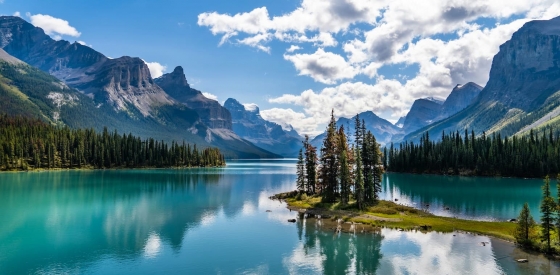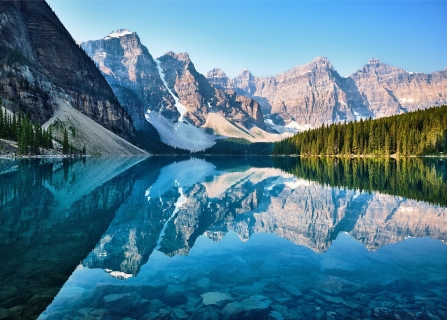Niagara Falls, Canada - Weather and Climate
Niagara Falls experiences a humid continental climate. Precipitation is speadout evenly throughout the year. During winter temperatures can drop well below freezing and you can expect a lot of snow. Summers are pleasant without it ever being to hot.
Average maximum day and minimum night temperature
Visitors to Niagara Falls can expect significant temperature changes throughout the year. Average daytime temperatures reach a comfortable 27°C in July. In February, the coolest month of the year, temperatures drop to a very cold -1°C.
At night, you can expect cooler temperatures, with averages dropping to around -8°C during this month.Check out our detailed temperature page for more information.
Temperature ranges by month
Precipitation and rainy days
Generally, Niagara Falls experiences moderate precipitation patterns, averaging 929 mm yearly. Niagara Falls experiences moderate seasonal variation in rainfall, with monthly averages ranging from 103 mm in October, the wettest month, and 59 mm in March, the driest month.
The mean monthly precipitation over the year, including rain, hail and snow
Sunshine over the year
Niagara Falls can be enjoyed more throughout the sunniest month of July under a blue sky, with approximately 10.2 hours of sunshine daily. In contrast, the city experiences much darker days in December, with only 2.3 hours of sunlight per day.
Visit our detailed sunshine hours page for more information.
Monthly hours of sunshine
Daily hours of sunshine
Average humidity
The relative humidity is high throughout the year in Niagara Falls.
The city experiences its highest humidity in December, reaching 77%. In April, the humidity drops to its lowest level at 67%. What does this mean? Read our detailed page on humidity levels for further details.
Relative humidity over the year
Forecast for Niagara Falls



Select a Month of Interest
Check the conditions for any month of the year.
The best time of year to visit Niagara Falls in Canada
During the months of May, June and September you are most likely to experience good weather with pleasant average temperatures that fall between 20°C and 26°C.Other facts from our historical weather data:
July has an average maximum temperature of 27°C and is the warmest month of the year.
The coldest month is February with an average maximum temperature of -1°C.
October tops the wettest month list with 103 mm of rainfall.
March is the driest month with 59 mm of precipitation.
July is the sunniest month with an average of 307 hours of sunshine.
No idea where to travel to this year? We have a tool that recommends destinations based on your ideal conditions. Find out where to go with our weather planner.



